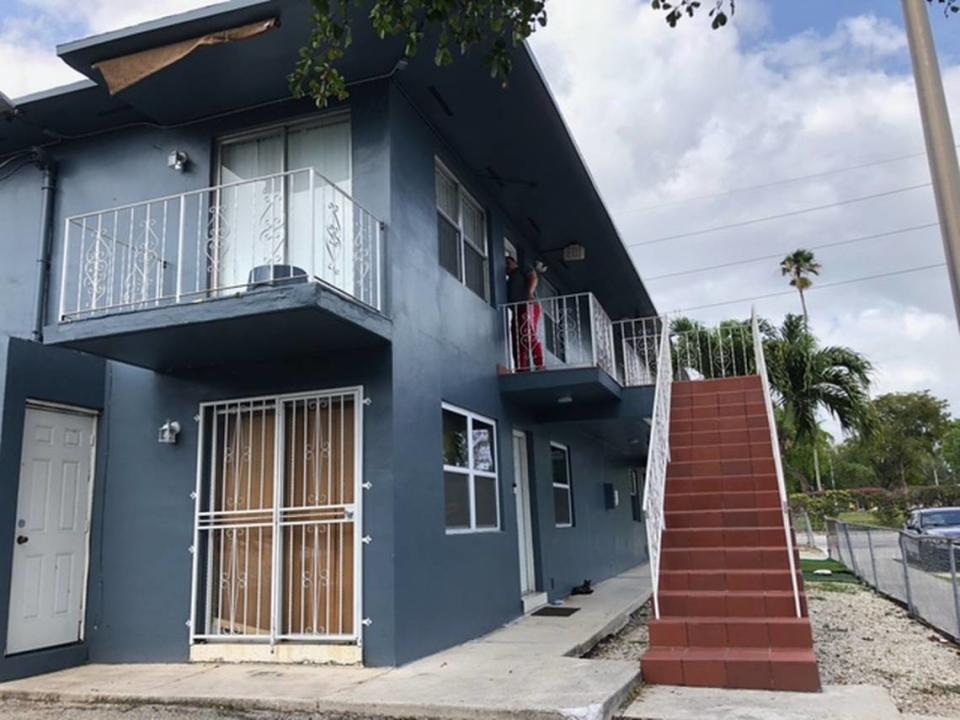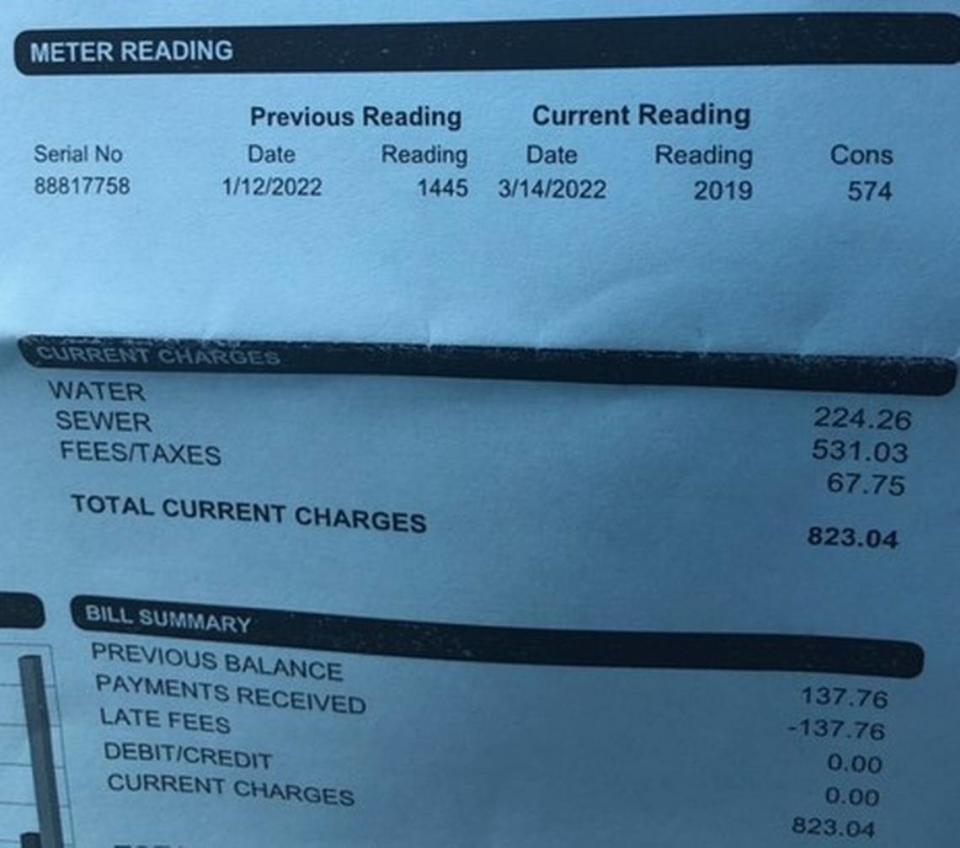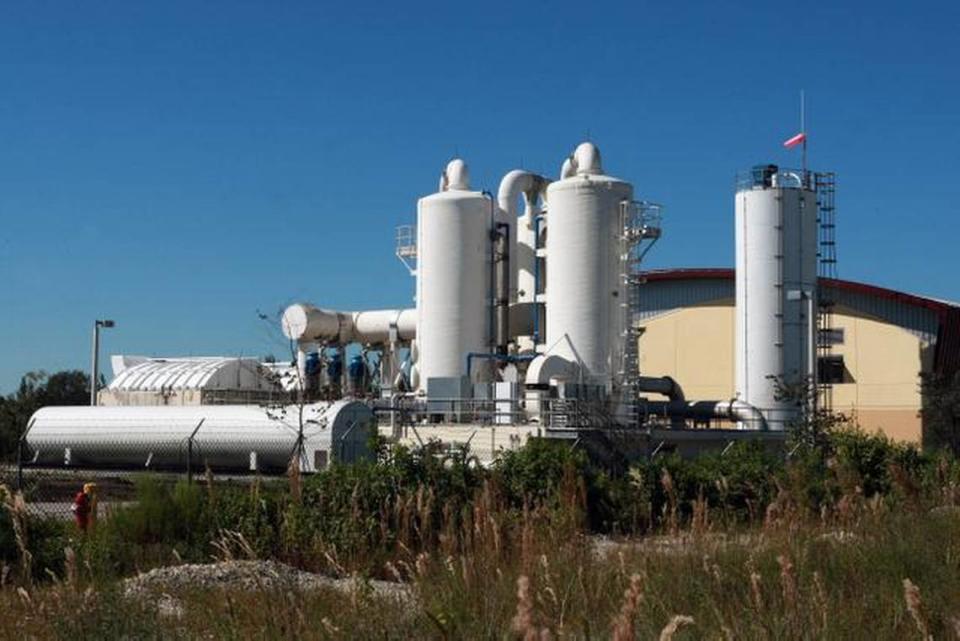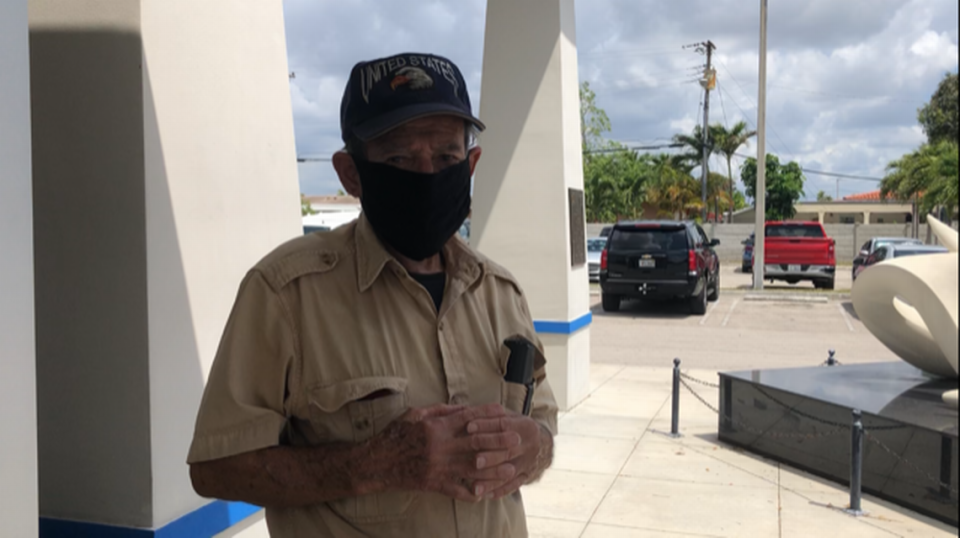The silent crisis that affects everyone in Hialeah: the exorbitant price of water and sewer
Hialeah is experiencing a silent crisis that is affecting many residents in the community — high water and sewer bills.
Osbel Bandome lives with his wife and their son in a two-bedroom apartment without a washing machine at 3 W 30th St. Last month, the family received a utility bill for $179. “We pay a lot of water just for the bathroom. We don’t even use it to drink because it tastes bad. We’ve only been here four months. We used to live on LeJeune Road, but a car crashed against the house, and we had to move. There, we paid $90. I don’t know why water is so expensive here,” said Bandome, a native of Cuba.

According to data provided by Armando Vidal, director of Public Works in Hialeah, the city has the fourth most expensive water and sewer service prices in Miami-Dade County, despite 19.6% of its population being below the poverty line.
The median income of Hialeah residents is $38,471, which is $15,504 lower than the county median, according to the 2020 Census.
The municipal study shows that only three of the 34 cities in the county have higher water and sewer rates than Hialeah. They are North Miami Beach, Bay Harbor Islands and Medley.
Consumers criticize rates
In the house located at 83 E 56Th St., which does not have a pool, the most recent bill for a family of three was $823.04.

He also complained about the process of making payments, saying the city’s website usually doesn’t work properly, the drive-up window can take a long time, and by phone “you can spend all day until someone answers and, if you come to the office, the staff has no interest at all in helping.”
Asked by el Nuevo Herald, Hialeah Mayor Esteban Bovo Jr. acknowledges that the water service in Hialeah is a big problem for its residents. “Besides being mayor, I am also a Hialeah resident. I experience the same difficulties. This issue is a priority for me ... we have held workshops to discover ways to improve water and sewer services and costs,” he said.
Hialeah Councilman Bryan Calvo agrees that the price of the service impacts the community’s budget. Often, he said, he receives complaints from the community, from families who have received bills of even more than $3,000.
Armando Ramírez lives at 3554 West 38 Terrace with his son and daughter-in-law. They paid $285 in the most recent billing cycle. However, he pointed out that “on average I pay $500,” although he estimates that having a pool could affect the price, so he asked the authorities to check his rates.
WHY WATER SERVICE IS SO EXPENSIVE IN HIALEAH
There are multiple reasons why the service in the City of Progress is so high, among them, the structure of the system, the economy of scale, the franchise fee, the bimonthly billing cycle and leaks in the water and sewer pipes.
Economy of scale:
Miami-Dade County charges 100% of the sewer service and provides 50% of the water to the residents of Hialeah. The remaining 50% is produced by the city.
The county rate is less than the city rate. There are consumers who pay for water and sewer directly to Miami-Dade. These Hialeah residents pay less than their neighbors.
Although the Hialeah reverse osmosis plant, west of I-75 and NW 138th Street, is capable of producing 100% of the water residents need, it only provides 50% because producing it is more expensive than the county by nearly $1 more for every 1,000 gallons of water.

While Miami-Dade produces water for more than two million people, the city supplies 233,876 people.
The construction of the treatment plant cost $100 million. Miami-Dade County financed 50%, the other half was paid through city-managed bonds. The project stipulates a production of 10 million gallons per day, but its current capacity is 7.5 million gallons per day.
Average consumption:
The Public Works Department has 58,700 water meters and 13 employees in the meter reading section. Since billing is bimonthly, the meters are read six times a year. Each employee reads approximately 173 meters per day, according to information provided by the mayor’s office.
José Veroso, who lives alone at 455 East 54 St., pays about $80 for water service. He says that sometimes “the inspectors (who check the water meters) don’t look at the numbers. I clean mine but what the water employees do most of the time is estimate an average and put it on your bill. That shouldn’t be. In addition, most of the meters in the area are very old. They can’t even be read.”

Bovo acknowledged in the first water workshop this year, held on March 1, that he receives similar complaints from the community quite often. “They are not reading my meters. They are doing some kind of estimate (on consumption). It’s a widespread complaint,” he said.
In a previous interview with el Nuevo Herald, the mayor said that “one of the complaints (about the price of water) is that the meters are not being read. There are old areas in the city where the meters are in the back of the houses, and in those areas an estimate is made. Many people believe that these estimates are too high, and it is possible, but until I get to know the process very well, we won’t be able to address this issue with the transparency that I would like.”
Councilman Calvo said in an interview with el Nuevo Herald that when there are bills like the one for $823.04 after the previous cycle was $137.76, it shows that the bills estimated by the department “are not correct or close to the reality of consumption.”
The mayor’s office said that in the last six months only 560 estimates of service consumption had been made out of the 239,586 bills issued in that period.
Franchise fee:
Hialeah has a franchise fee for the utility’s use of municipal rights of way. It is charged as a percentage of water and sewer gross revenue.
“Franchise fees have had a significant impact on user fees since they were adopted in fiscal year 2014. It is estimated that over the last seven years, franchise fees paid to the city equal approximately 17% of increases in water and sewer prices during the same period,” said the 2020 Water and Sewer Public Service Rate study commissioned by the local government to Milian, Swain & Associates Inc.
A more recent report from the same company from 2021 on the impact of the franchise fee on consumers of the Hialeah service said that “the cumulative effect of the franchise fees paid to the city since 2014 by the average client for a consumption of 4,500 gallons was approximately $4.50 per month and $55 per year. This represents approximately 8% of the average customer bill.”
Bimonthly charge:
In the city, the water service is charged every two months, which means that the rate represents, in many cases, a major expense for the household.
Former mayors “(Raúl) Martínez, (Julio) Robaina and (Carlos) Hernández always refused to change the cycle (from bimonthly to monthly). They had their concerns about consumer reaction if it was changed,” Vidal said.
Vidal explained that in 2004 they changed the service charging system “which would allow monthly charging, but there was a policy to keep it bimonthly ... if we want to change it to monthly, it would be necessary to update the system.”
Hialeah Councilwoman Mónica Pérez, at the same workshop, said that she has “met residents who have leaks in their houses and two months later they received bills of $600. If the bills were monthly, they could be aware that they are going to receive a more expensive bill.”
An overloaded system:
In East Hialeah, the oldest part of the city, the pipes were installed in the 1960s, as well as the sewage inlet lines.

In a statement sent to el Nuevo Herald, the Hialeah mayor’s office warned that “like most U.S. cities, there are pockets of obsolete infrastructure. That does not mean that these facilities need immediate replacement. Infrastructure issues are being addressed ... the city will continue to work on its water and sewer infrastructure.”
The city recognizes that “in the eastern sector there are areas where the water lines are close to 40 years of useful life. However, several areas have been improved. Others will be addressed in the future,” he said.
Employees of the Department of Public Works told el Nuevo Herald, on condition of anonymity for fear of being fired for speaking without authorization, that the repairs they carry out daily are for emergencies — floods, broken pipes, interruption of supply — not preventive maintenance.
Councilman Calvo warned that in 18 of the more than 100 zones that run through the Hialeah water system, there are sewer lines that have 8,000 gallons per inch of pipe diameter, per day, for each mile (Miami-Dade allows 5,000 gallons.) This surplus of 3,000 gallons generates an additional expense for the residents of those areas of the city.
This happens when a sewer has an infiltration. The liquid in the ground enters the pipe and more water is processed in the treatment plant.
The City of Hialeah said, “There are 17 priority areas in the consent agreement of the Department of Environmental Resources Management (DERM), and eight pumping stations have been completed (005, 012, 056, 131, 133, 140, 141, 143.) The city will certify two additional stations (105, 154) this month, and the remaining stations (008, 109, 116, 119, 124, 128) will be checked in June to determine if they are below the infiltration threshold. PS 127 will be rebuilt in 2023.”
The six stations that the mayor’s office announced will be reviewed in June are considered priority, marked in red on a map provided by internal city sources.
In these six areas, pumping exceeds 10 hours of work, Public Works employees analyzed, which means that these stations would have been in a “moratorium” condition for several months, and that must be corrected to avoid their paralysis, according to the DERM Operations and Maintenance Manual.
In 2019, the county government warned that Hialeah was ignoring regulations on sewer use in some areas of the city, the Miami Herald reported.
THE PRICE OF WATER AFFECTS RENTALS
Although the water rates are high, they have not reached their ceiling, according to explanations given by Debbie Swain, a representative of Milian, Swain & Associates Inc., to city council members.
The most recent rate adjustment dates back to October 2020, the minimum price for water service is $10.47 and for sewer $11.47 bimonthly, respectively.
Around 25% of Hialeah’s population can’t afford the cost of the service, says Fitch Ratings, a leading credit rating provider which reviews the bonds of the city’s water and sewer system.
“The biggest problem apart from housing is the price of water and sewer. It has to do a lot with the price of rentals because most properties don’t have individual meters for each apartment. This fee is included in the rent,” Councilman Calvo said.

 Yahoo Movies
Yahoo Movies 
